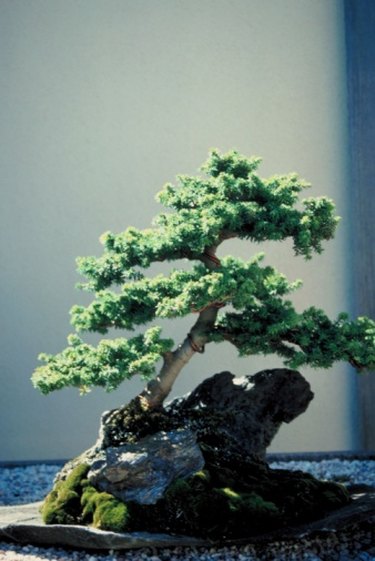
The Canadian hemlock, referred to scientifically as Tsuga canadensis, is a member of the pine family that features a softer form than many other conifers. This species is known for a willowy nature and soft, feathery foliage. A multitude of cultivars offer varying colors and growth habits. The foliage of the Canadian hemlock may show damage, typically in the form of yellowing or browning and die-back, for a number of reasons ranging from pests and disease to extremely high temperatures.
Hemlock Woolly Adelgids
Video of the Day
The Canadian hemlock is the main host of the hemlock woolly adelgid. This insect leaves trademark egg sacs that resemble small, dirty clumps of cotton at the bases of needles. Affected needles suffer from discoloration and drying and eventually fall off. Host limbs will generally die within the first summer and the entire tree can die within one to four years. Eggs hatch April through June and create a second generation later in the summer. The crawler stage following hatching is the only time to effectively control the adelgids with a horticultural oil.
Video of the Day
Needle Blight, Rusts and Fungi
Needle blight of hemlock, caused by the fungus Fabrella tsugae, causes yellowing in needles. Needles turn brown as they age and drop prematurely. If a tree is infected several years in a row, it may suffer from extensive needle shedding. This fungus is most prevalent in areas of high humidity and can be recognized by its single-needle browning habit. Multiple rusts may affect the needles of Canadian hemlock. Rosellinia herpotrichoides can cause frequently damp lower foliage to develop a grayish mat on needles and twigs. A sooty black growth on needles may be caused by Dimerosporium tsugae.
Scales
Both the hemlock and the elongate hemlock scale can be serious pests on the Canadian hemlock. These pests use sucking mouthparts to feed on fluids in the needles, causing foliage to discolor and drop early. Entire branches die, and a heavy infestation can kill at tree after several years. Scales may be treated with horticultural oil or insecticidal soap.
Mites and Insect Pests
The hemlock borer, Melanophila fulvoguttata, attacks weak trees and causes shoot tips to turn yellow. The hemlock lopper consumes part of the hemlock needle and the remainder turns brown. Black vine weevil, gypsy moth, caterpillars, bagworms, leaf miners, and several species of mites including the hemlock rust mite and the spruce spider mite also feed on or impact Canadian hemlock foliage.
Environmental Factors
Canadian hemlock frequently develops needle discoloration or die-back if the tree is suffering from environmental stress. Canadian hemlock does not enjoy poorly drained soils or continually wet sites. full sun, drought, high wind, high heat and salt spray can cause chlorotic or scorched foliage. Sunscorch will occur if temperatures exceed 95 degrees Fahrenheit.